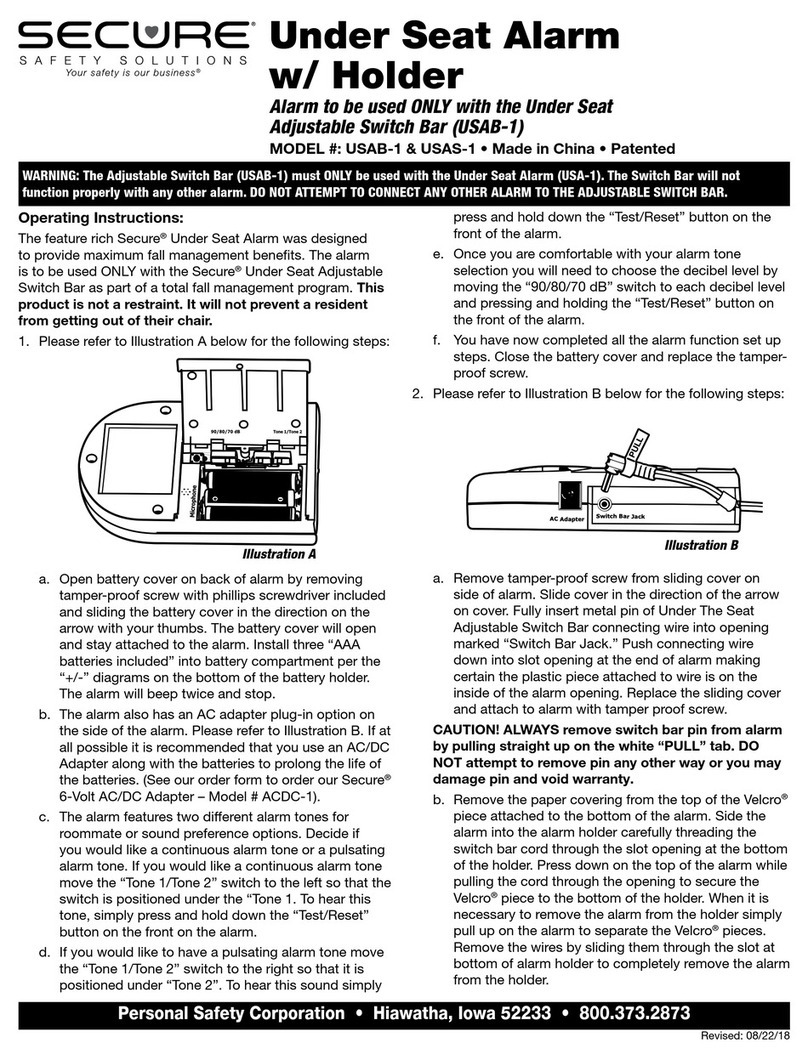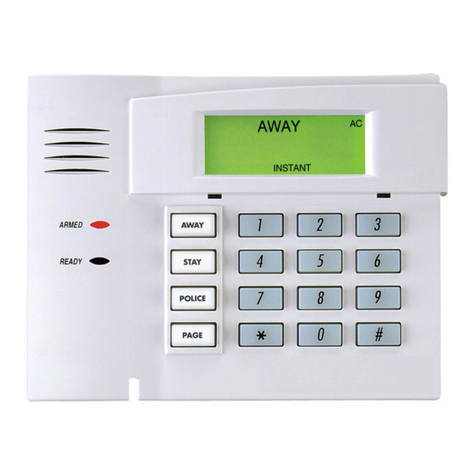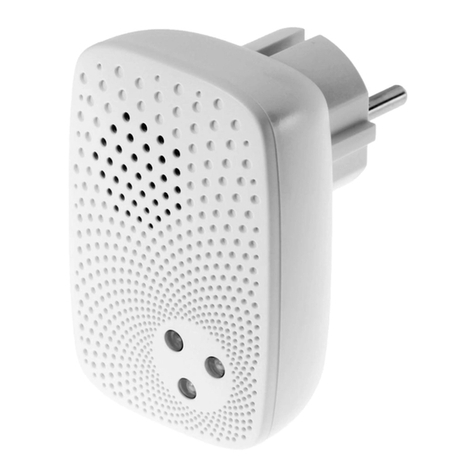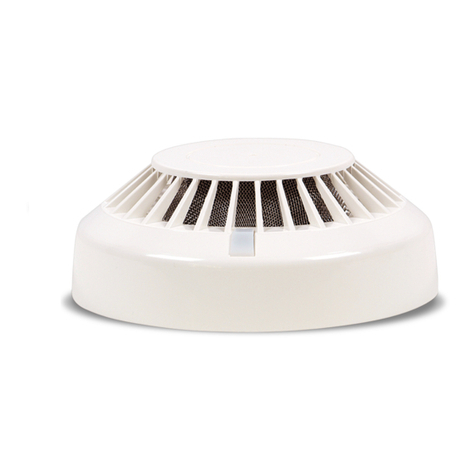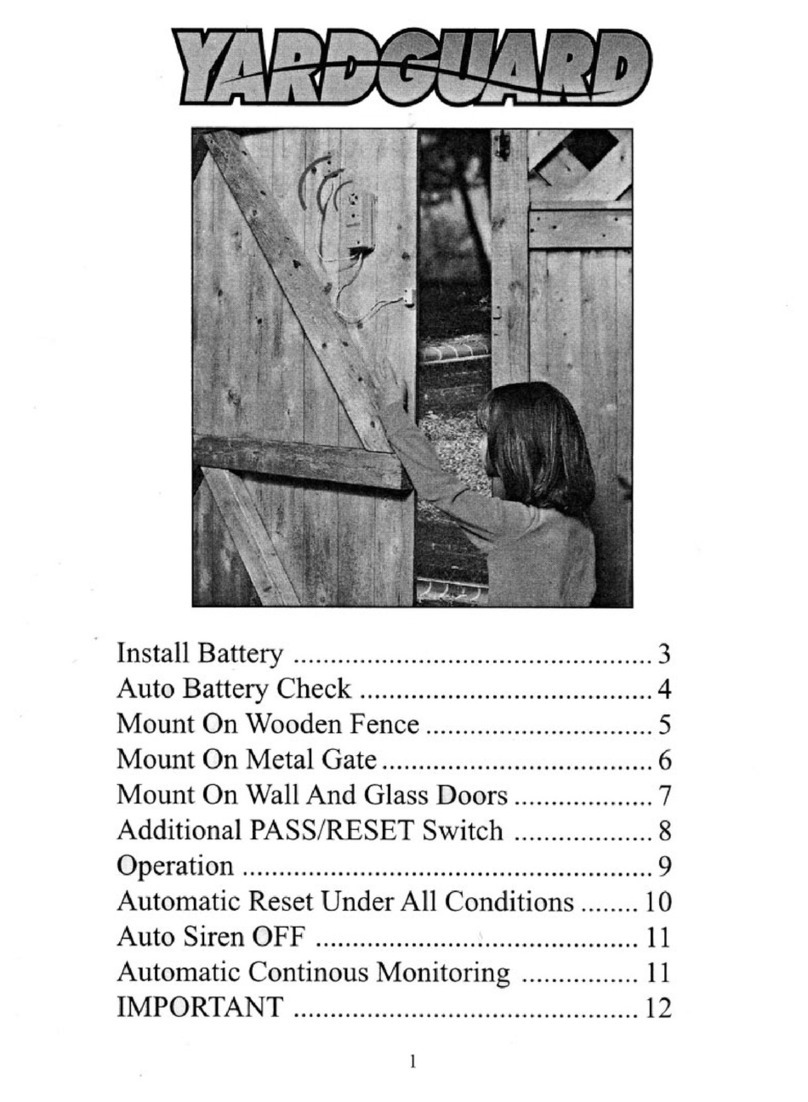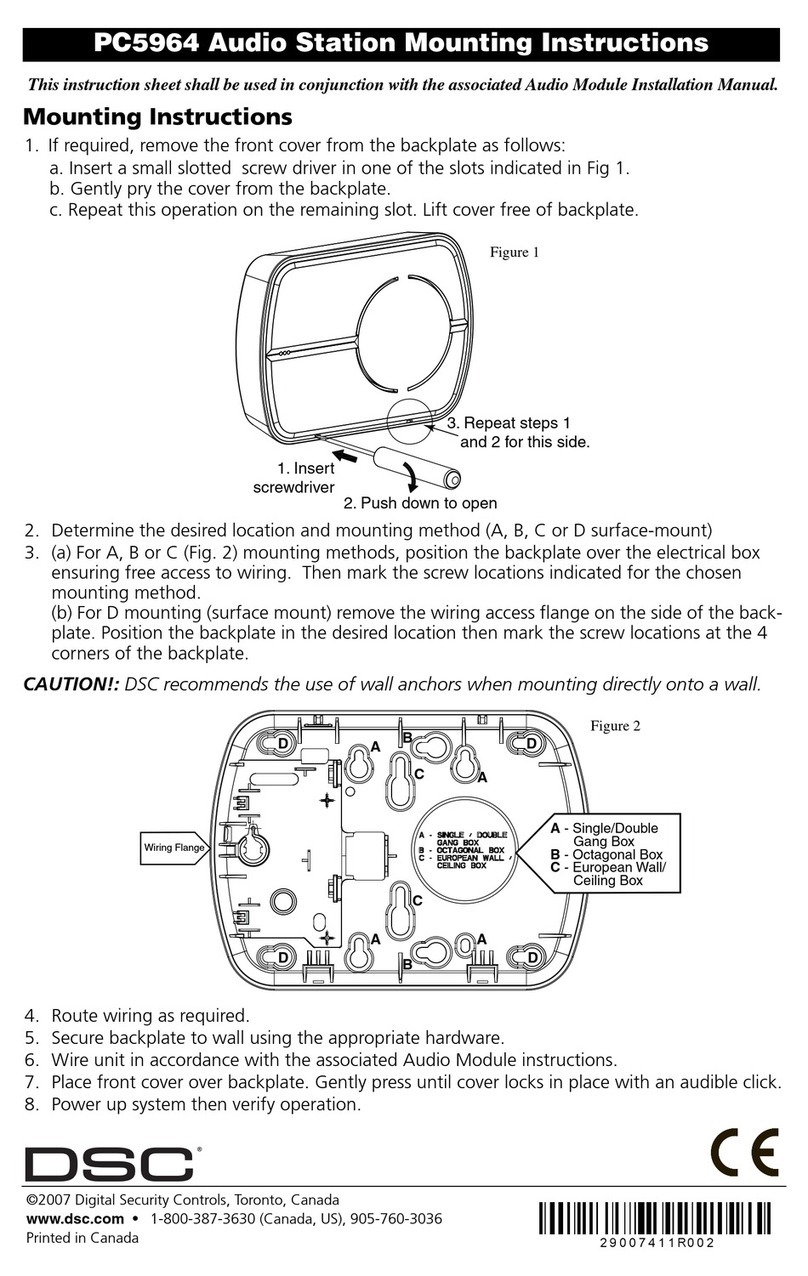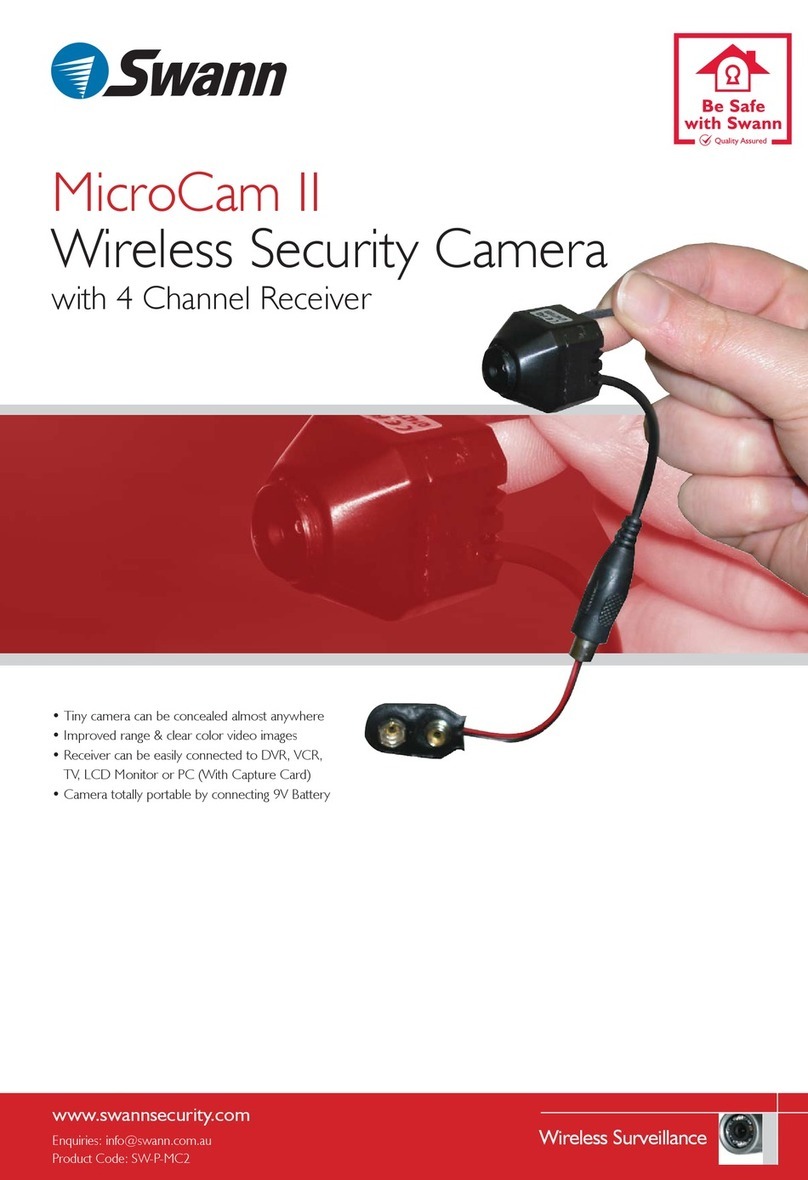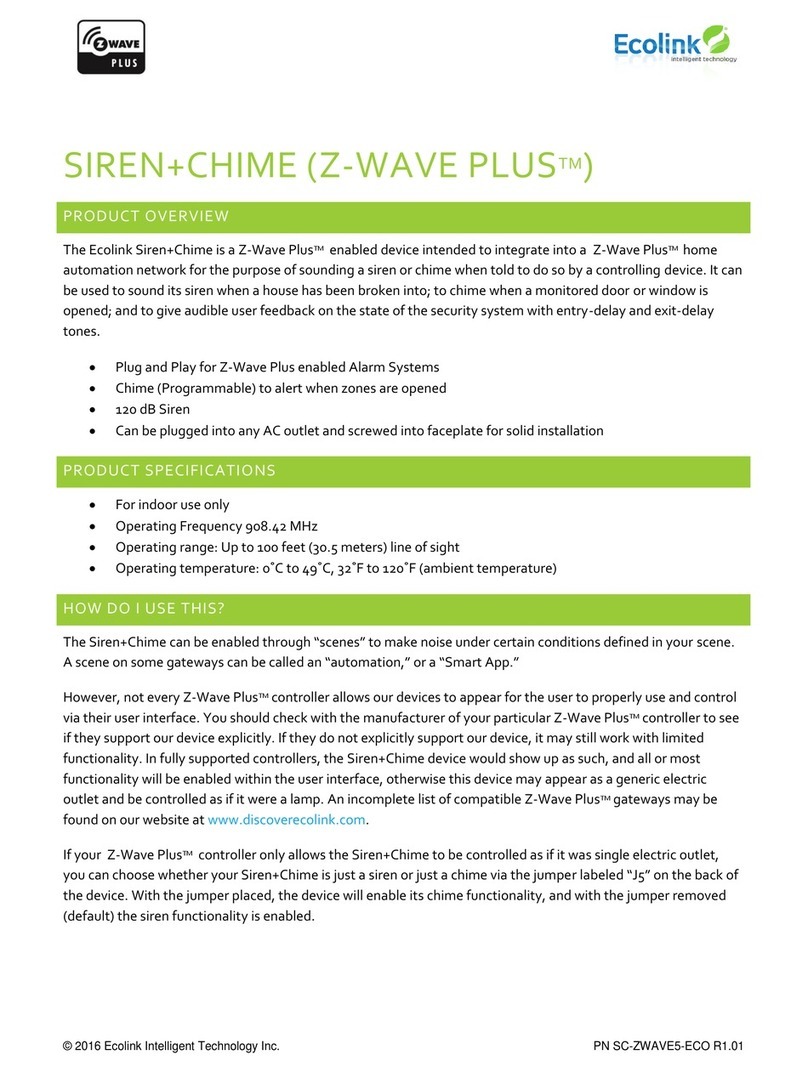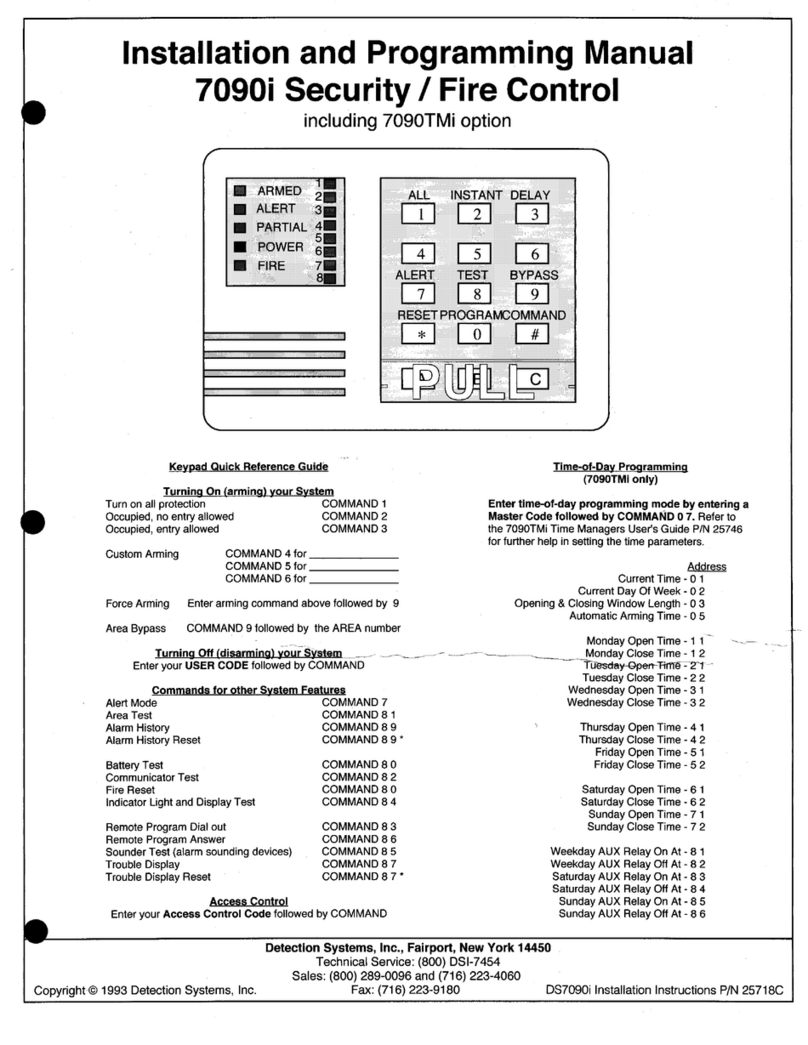
Basic operating state of the unit is sleep. In this
state, it will not respond to any events, its outputs
are off, and the circuit activity is indicated by LEDs,
green or orange, but only if any of the trigger lines
are not closed. If the voltage of the backup battery
drops below 10.5 V, the orange LED will additionally
flash.
The LED states with their corresponding device
states are shown in Figure 1. The unit is activated
when its input is shorted to earth. Red LED will then
flash, and the buzzer will beep periodically to
indicate the time at which you should leave the
protected area. After 30 seconds the unit will stand
by, and before the trigger line circuits must be
closed, the green and orange LEDs off. Otherwise,
the alarm procedure will start immediately. In the
active state, a green LED is on every few seconds. If
the alarm is reported via a delayed line, the unit can
be deactivated within 30 seconds; if an immediate
line is used, the sound alarm and relay will be
activated immediately. The alarm condition is
indicated by the continuous light of the red diode
and the diode corresponding to the active trigger
line.
The alarm siren will be switched off automatically
after 1 minute, irrespective of the status of the
triggering lines, another line violation will repeat
the procedure. The relay output will be on for 1
An uncomplicated alarm unit with monitoring lines:
immediate and delayed. Several sensors can be
connected in series to each of them, such as motion
detectors, window and door opening sensors (e.g.,
reed switches), optical barriers and others with output
in the form of normally closed (NC) contacts.
This unit is ideal for basic security in a house, flat or
leisure cabin.
Features
• relay output with load capacity 230 VAC / 8 A
• siren power output 12 VDC / 3 A
• 2 trigger lines: immediate and delayed with a delay
time of 30 seconds
• operating status indication: 3 LEDs
• low battery voltage indication
• power supply 8-15 VDC, current consumption: 2 mA
at stand-by, 100 mA at alarm
Circuit description
Alarm Unit with 2 Monitoring Lines
AVT 5466
1
kits
ASSEMBLY DIFFICULTY
PDF
DOWNLOAD
